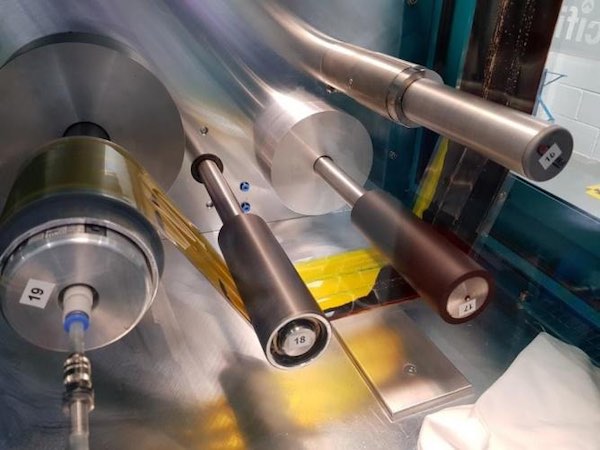A team of researchers from Swansea University in the UK, led by Professor Trystan Watson, has reportedly used a roll-to-roll fabrication method for four layers of slot-die coated photovoltaic solar cells. The team claims that this method has created perovskite thin films with the highest efficiency levels recorded to date, representing a major milestone that could enable more economical and efficient methods for solar energy generation.
The Highest Efficiency Ever Recorded
The perovskite solar cells (PSCs) printed using the team’s roll-to-roll method gave a stable power output of 12.2%, which is the highest efficiency for four layers of PSCs printed using this method to date. In contrast to silicon photovoltaic (PV) solar cells, which require high temperatures and high vacuum depositions, PSCs can be solution-processed at much lower temperatures. This makes it possible to use plastic substrates and create flexible solar cells.
According to the research team, it is this ability to solution-process that provides the opportunity to apply well-developed printing and coating techniques such as screen and inkjet, plus slot-die and spray coating. These advantages made it possible for them to use roll-to-roll manufacturing to fabricate four layers of PSCs.
In a statement, lead researcher Rahul Patidar said: “Perovskite solar cells aim to increase the efficiency and lower the cost of traditional solar energy generation. They have the potential to be highly efficient and relatively cheap to manufacture, so the aim is to improve fabrication methods for upscaling. This study signifies the next step towards commercialisation.”

Swansea researchers achieve the highest efficiencies ever seen with roll-to-roll printed PSCs. Image Credit: Swansea University.
Slot-Die Coating
Slot-die coating allows the wet film thickness to be controlled prior to coating. It is also very efficient in material usage, with minimal loss of material when it is compared with spray coating or screen printing.
Further efficiencies were achieved by the team through the use of an acetonitrile-based system which has a rheological advantage due to low viscosity and low surface tension, resulting in better coatings. Without this system, the team would have had to rely on a significantly more expensive process that necessitates the use toxic solvents at an industrial scale, which requires a lot of air handling to stay under safety limits.
Along with the acetonitrile-based system, a ternary blend of high workspace exposure limit solvents was introduced, replacing chlorobenzene for the deposition of hole transport material.
A complete solar cell for a chosen architecture requires coating five layers. However, in this research, four layers were coated via slot-die coating and the top contact was dropped on using thermal evaporation. This is because slot-die coating the fifth (top) contact without destroying the layers underneath is not yet possible.
If researchers are able to solve this challenge, it would enable the manufacture of a fully roll-to-roll printed perovskite solar cell. Without a top contact, however, the research team still does not have a complete process or product, and it is currently not known whether the Swansea team intends to approach and address this problem.




